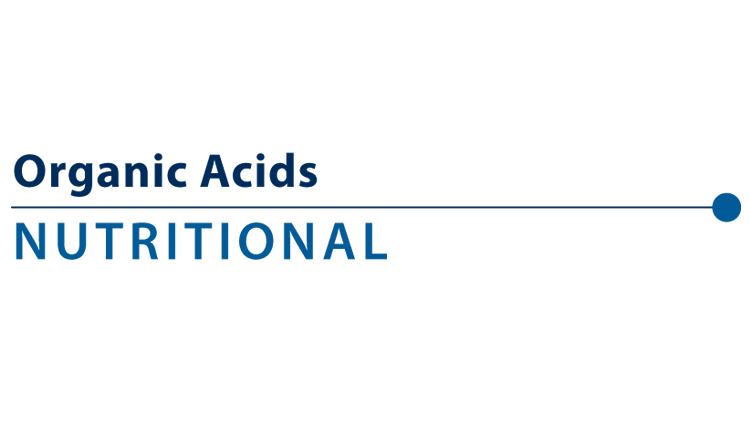Description
omplete Evaluation of Key Biomarkers of Metabolism
The Organic Acids test (formerly Metabolic Analysis Profile) is a nutrition test that requires a first morning void (FMV) urine collection to measure organic acids. The report includes personalized micronutrient recommendations for vitamin and mineral cofactors as well as digestive support recommendations based on a patient’s individual biochemical metabolism.
Organic Acids is a functional and nutritional evaluation that assesses important metabolic pathways. It is designed to help practitioners identify root causes of dysfunction and provide a systems-based approach to help patients overcome chronic conditions and live a healthier life.
The Organic Acids report offers:
- Nutrient recommendations for key vitamins, minerals, and digestive support
- Functional pillars with a built-in scoring system to guide therapy around needs for methylation support, toxic exposures, and mitochondrial dysfunction
- Interpretation-At-A-Glance pages for patient education
- Dynamic biochemical pathway charts for clearer understanding
What is an organic acid?
Organic acids are a broad class of compounds formed during fundamental metabolic processes in the body. Metabolic reactions produce these compounds from the digestion of dietary protein, fat, and carbohydrates. The resulting organic acids are used by the body to generate cellular energy and provide many of the building blocks necessary for cell function. Urinary organic acid measurement offers a functional assessment of nutrient status.
Listen to The Lab Report podcast answering the question of what is an organic acid.
What is a functional nutritional assessment?
Marked accumulation of organic acids in urine can signal a metabolic inhibition or block. The metabolic block may be due to a nutrient deficiency, an inherited enzyme deficit, toxic build-up, or drug effect. Enzymes that are responsible for metabolizing organic acids are vitamin and mineral dependent. With this, elevations in organic acids can reflect a functional need for these nutrients on a cellular and biochemical level, even despite normal serum levels.1-5 Recommendations for nutrient supplementation based on elevated organic acid results are generated using a literature-based proprietary algorithm. Traditionally, urinary organic acid assessment has been used in neonatal/pediatric medicine to identify genetic inborn errors of metabolism, with severity depending on the degree and type of error.* In many cases of genetic inborn errors, the enzymatic defect may be compensated for by high doses of specific vitamin and mineral cofactors and/or dietary interventions. Intervention with higher-dose nutrient cofactors may also be effective in cases of decreased enzyme activity due to causes other than frank inborn errors.
* Genova’s organic acid testing is not intended for the diagnosis of neonatal inborn errors of metabolism.
Which patients might benefit from organic acid testing?
Organic Acids testing is effective for patient concerns such as:
- Mood Disorders6,7
- Mitochondrial Dysfunction8
- Fatigue9
- Chronic Stress10
- Inflammation11
Several diseases are associated with abnormal organic acid levels such as depression, anxiety, cardiovascular disease, neurocognitive decline, diabetes, cancer, anorexia, and many others.
About the Organic Acids test
The Organic Acids report allows for easy interpretation and clinically actionable results. It includes a Suggested Supplement Schedule that provides personalized recommendations based on test results Interpretation-At-A-Glance section of the report provides facts related to nutrient function, causes and complications of their deficiencies, and dietary sources.
The Metabolic Analysis Profile report categorizes test results into major metabolic areas:
- Malabsorption and Dysbiosis Markers
- Cellular Energy & Mitochondrial Markers
- Vitamin Markers
- Neurotransmitter Metabolites
- Toxin & Detoxification Markers
- Oxalate Markers
Malabsorption and Dysbiosis Markers
These markers are byproducts of bacterial and fungal activity in the GI tract that can also come from the fermentation of dietary phenols and flavonoids.12,13 In the absence of dysbiosis, high levels of these metabolites can reflect a healthy intake of antioxidant-rich foods.14 When multiple markers are elevated, a stool test may provide further information regarding dysbiosis or other GI dysfunction.
Cellular Energy and Mitochondrial Markers
The cellular energy and mitochondrial markers reflect the body’s ability to process dietary macronutrients to feed the Krebs cycle (Citric Acid Cycle) and subsequent energy production. Abnormalities throughout the Krebs cycle, as well as in fatty acid oxidation, glycolysis, and protein metabolism may reflect enzymatic dysfunction, functional nutrient insufficiencies, toxins, genetic polymorphisms, and underlying diseases.15-24 Abnormal urinary excretion of these organic acids provides a window into various clinical conditions, as well as potential therapeutic targets to correct mitochondrial dysfunction.
Vitamin Markers
Some organic acids are commonly used to assess the status of specific B-vitamins. By measuring organic acids that are known to rely on specific nutrients for enzymatic metabolism, clinicians can gain insight into functional vitamin needs.
Neurotransmitter Metabolites
These organic acid compounds are down-stream metabolites of neurotransmitter synthesis and degradation. Elevations can represent altered neurotransmitter metabolism due to enzymatic nutrient cofactor needs, genetic predispositions, toxins, chronic illness, and stress.
Toxin and Detoxification Markers
These urinary markers can reflect exposure to environmental toxins, or up-regulation of detoxification pathways in response to exposures. Elevations lead to recommendations to identify the exposures and minimize or remove them. Clinicians may consider the use of antioxidants and nutritional support of detoxification pathways.
Oxalate Markers
The oxalate markers may provide insight into abnormal metabolism in the glyoxylate pathway which ultimately could result in higher levels of oxalic acid. The oxalates may have specific clinical relevance to patients suffering from recurrent kidney stones, as high levels of oxalic acid are a strong risk factor in kidney stone development. Also, there is evidence to support the notion that increased levels of oxidative stress and/or metabolic dysfunction may ultimately contribute to dysfunctional oxalate metabolism leading to higher excretion of oxalic acid.
Genova’s Methodology
Urinary organic acids are measured via GCMS, LC/MS/MS and alkaline picrate. Reference ranges are age and gender specific and are based on a questionnaire-qualified healthy cohort. Testing is not performed in patients under 2 years old.
Organic Acids is also a part of the comprehensive NutrEval FMV and NutrEval Plasma profile. The NutrEval is a combination of nutritional tests that not only measures organic acids, but also amino acids, essential and metabolic fatty acids, oxidative stress markers, and elemental markers (both nutrient and toxic elements). Organic Acids is also part of the Metabolomix+ urine nutritional test which, in addition to organic acids, also measures amino acids and oxidative damage markers.





